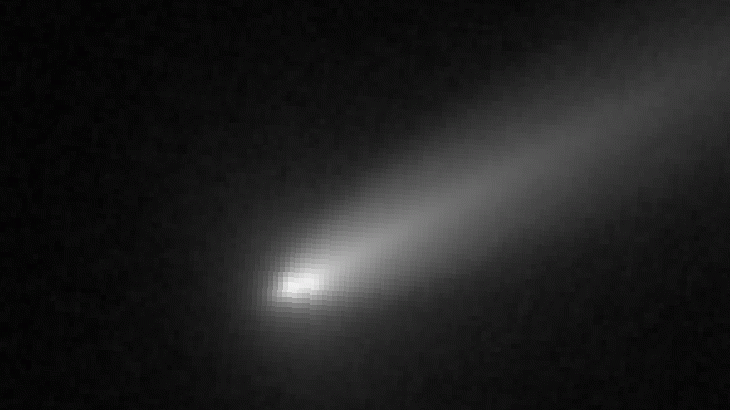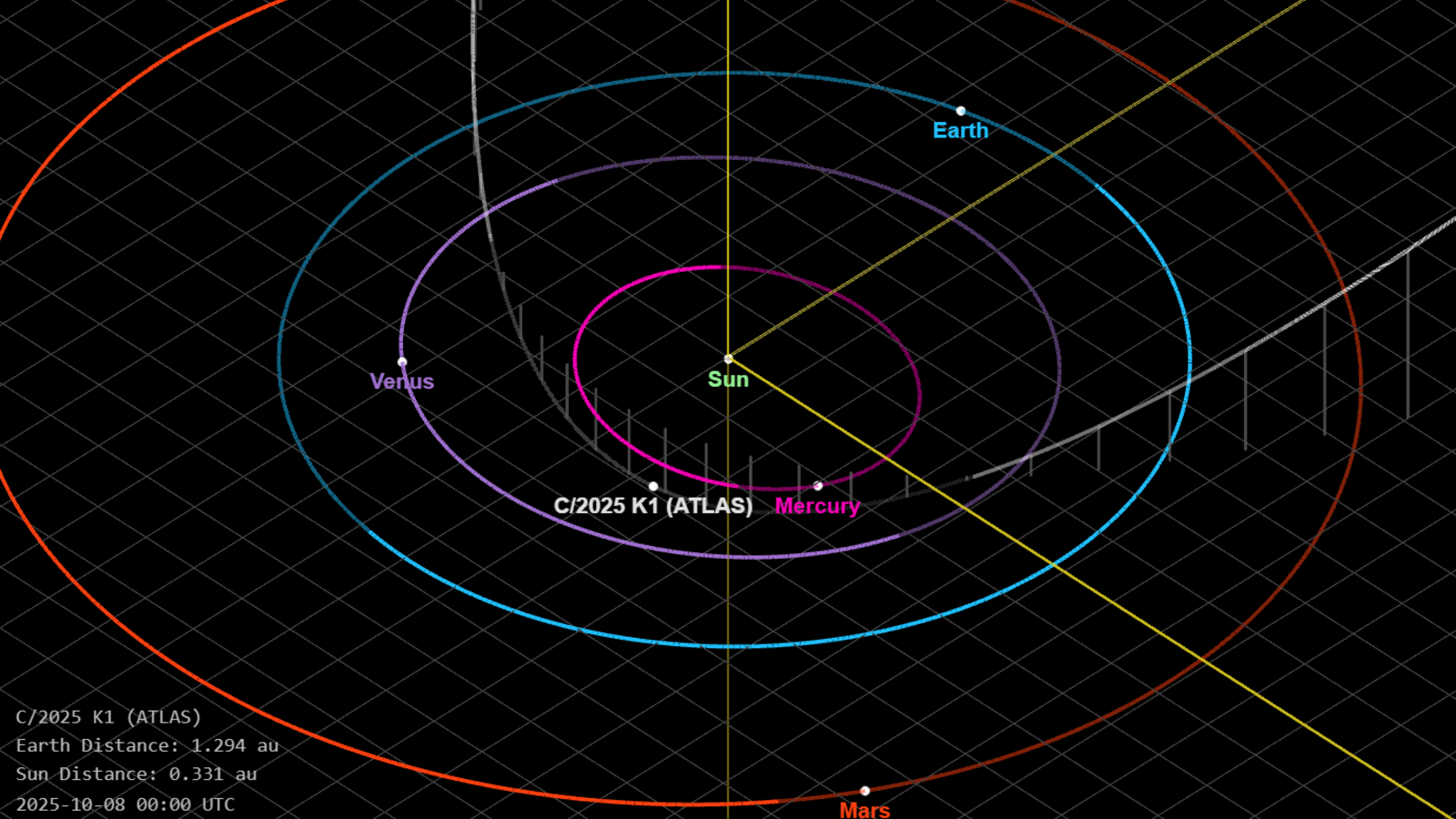RIP 'other ATLAS': Watch the doomed comet explode into pieces in incredible new images
Stunning new photos show the pieces of the "other ATLAS," C/2025 K1, breaking apart in space after the golden comet suddenly exploded earlier this month.

In space, death can be a beautiful thing. That's certainly the case for the recently deceased "other" comet ATLAS, which is slowly breaking apart after meeting its explosive end earlier this month, stunning new images reveal.
C/2025 K1 (ATLAS) is a comet originating from the Oort Cloud beyond Neptune that was discovered in May by astronomers at the Asteroid Terrestrial-impact Last Alert System (ATLAS). It reached its closest point to the sun, or perihelion, on Oct. 8, coming within 31 million miles (50 million kilometers) of our home star. But the comet largely went under the radar until earlier this month, when it developed a rare golden glow in its coma and tail.
It has become known as the "other ATLAS," thanks to its shared surname with the interstellar comet 3I/ATLAS, which has been dominating headlines since it was first spotted shooting through the solar system in July. The two comets have no relation, other than being detected by the same telescope network around the same time.
On Nov. 13, astronomers noticed that C/2025 K1 had broken apart into several pieces. Austrian astrophotographer Michael Jäger has been keeping a close eye on C/2025 K1 since it began to fall apart, and he has now shared a stunning timelapse animation that shows the fragments of the comet slowly separating from one another.
"Following brightness surges in early November, we have been able to observe this comet splitting into three brighter fragments for the past two weeks," Jäger told Spaceweather.com. "The animation shows it on November 12, 14, 18, 19, and 20th."

The comet was not expected to survive its perihelion — astronomers predicted that the close proximity of its journey around the sun would place a huge amount of gravitational strain on the object. After its solar flyby, initial observations suggested that it had emerged unscathed. However, following a sudden brightening event, the comet then broke apart into three distinct pieces.
More recent photos have shown that a smaller fourth fragment also splintered from the comet, according to Spaceweather.com. However, this part of the comet is not visible in the new animation.
Get the world’s most fascinating discoveries delivered straight to your inbox.
C/2025 K1 was one of just a handful of comets that have ever been seen with a golden hue (see below), which is likely the result of a surprising lack of carbon-bearing molecules, such as dicarbon, carbon monoxide and cyanide in its nucleus. In fact, only two other known comets have ever had fewer of these molecules, astronomer David Schleicher of Arizona's Lowell Observatory recently reported.
Researchers had hoped to learn more about the comet and its surprising composition during its closest approach to Earth on Tuesday (Nov. 25). However, this now seems unlikely.
But the comet's fragments will still be visible in the constellation Leo to anyone with a decent telescope or a pair of stargazing binoculars.

Other ATLAS(s)
C/2025 K1 is not the first comet to bear the name ATLAS. In fact, dozens of other comets have been found by the Asteroid Terrestrial-impact Last Alert System — a NASA-funded robotic survey, which has been scanning the night sky using telescopes in Hawaii, South Africa and Chile since 2015.
Over the last few years, several ATLAS comets have made the news, including C/2024 G3, which appeared in spectacular snaps by astronauts onboard the International Space Station (ISS) earlier this year, as well as a doomed sungrazer comet, the Halloween ATLAS comet and Comet Tsuchinshan-ATLAS, which all shone brightly in 2024.
But the most famous of the ATLASs is 3I/ATLAS, an alien comet that is traveling past us after being ejected from its own star system, potentially long before the solar system was born.
3I/ATLAS is currently on its way back out of the solar system, having reached its own perihelion on Oct. 29, and will reach its closest point to Earth on Dec. 19, when it will reach a minimum distance of 168 million miles (270 million km) from our planet. And despite what some people claim, the astronomical community is very much in agreement that it is not an alien spacecraft.
Only time will tell what wonders the future ATLAS comets will have in store for us.

Harry is a U.K.-based senior staff writer at Live Science. He studied marine biology at the University of Exeter before training to become a journalist. He covers a wide range of topics including space exploration, planetary science, space weather, climate change, animal behavior and paleontology. His recent work on the solar maximum won "best space submission" at the 2024 Aerospace Media Awards and was shortlisted in the "top scoop" category at the NCTJ Awards for Excellence in 2023. He also writes Live Science's weekly Earth from space series.
You must confirm your public display name before commenting
Please logout and then login again, you will then be prompted to enter your display name.
